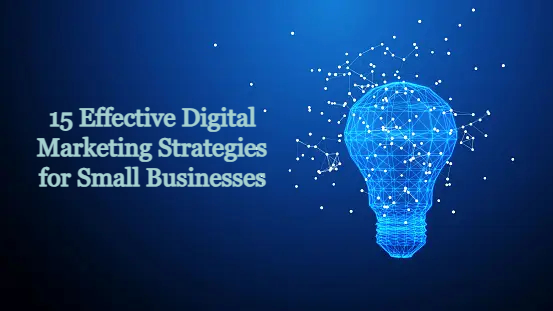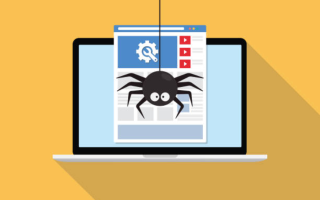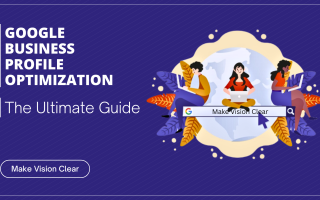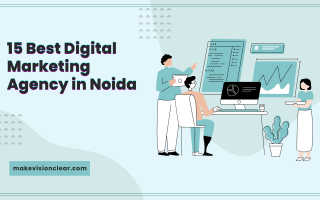Marketing is one of the most essential things whenever you sell your product, it is also important whenever you buy something. Every little bit of product or brand is important whether it be your traditional market or digital market.
All you need is why to rely, whom to rely, and how to rely. So to answer your such questions and give an amazing perspective related to such things. Here we are up with such services.
Just hop into it and get your answers!!
Table of Contents
What is Digital Marketing?
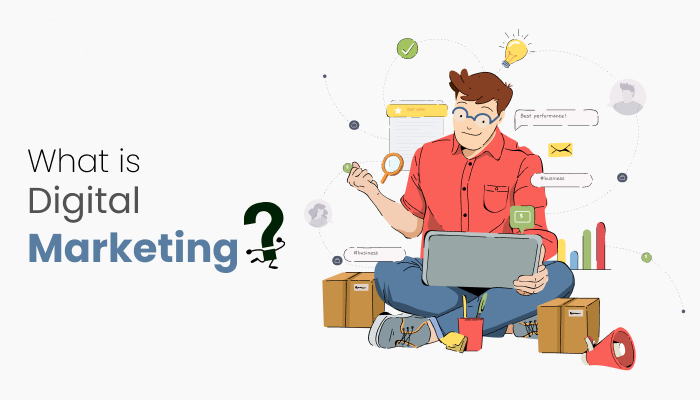
Is it a marketing strategy, a tool, or a method of promoting your company? So here it is, the act of advertising products and services using digital channels such as social media, SEO, email, and mobile applications is known as digital marketing.
Digital marketing refers to any type of marketing that uses electronic technology. With the introduction of the internet in the 1990s, digital marketing grew in popularity.
Digital marketing employs some of the same ideas as conventional marketing and is frequently regarded as an alternative means for businesses to contact consumers and comprehend their behavior. Read 10 Unmissable Reasons To Learn Digital Marketing In 2025.
According to statistics, worldwide digital advertising spending has reached $458.16 billion in 2021. This implies that digital marketing is, was & will be an essential tool for every business owner looking to increase income.
Simply looking around will reveal that digital technology has altered the environment we live in. All approaches that were employed 5-10 years ago no longer work. This is a dynamic and quickly evolving industry. If you want to get the most out of your digital advertisements, you must keep up with the current developments in this field.
Digital marketing is critical to the success of your online business. If you want to enhance your sales and overall growth, you need to be robust and use successful digital marketing strategies.
With ‘n’ number of benefits, it also has certain obstacles, and before we get into strategies, let’s look at what challenges a firm must confront first.
Challenges that you will face while establishing your business would be –
Customer-centric market, creating engaging content, mobile-friendly approach, and many more.
There are more such approaches but then it also depends on the size and complexity of the brand or product.
Digital marketing presents unique obstacles to those who practice it. Digital channels are continually proliferating, and digital marketers must stay up with how these channels function and how receivers utilize them.
Marketers must understand how to effectively sell their products or services through various platforms. So, to tackle this difficulty and overcome it, below are some tactics and strategies you should know.
Digital Marketing Services for Small Businesses: Kickstart Your Growth
1. Define Your Target Audience and Buyer Personas
A target audience is a group of individuals who are likely to be interested in a certain product, service, or message. On the other hand, a buyer persona is a fictitious depiction of a company’s ideal customer based on market research and data from actual consumers.
Buyer personas and target audiences are important because they enable organizations to generate more focused and successful marketing efforts.
Businesses may customize their language and offer to better resonate with their consumers by knowing their target audience’s requirements, tastes, and behaviors.
Buyer personas, on the other hand, are made-up depictions of a brand’s ideal buyer. They are created by collecting and analyzing data on actual consumers’ behaviors and preferences.
This information may include –
- Purchase patterns
- Internet behaviour
- Personal preferences
Businesses may better understand their consumer’s requirements and aspirations by establishing thorough buyer personas, which can help them customize their digital marketing tactics to better reach and engage their target audience.
Businesses may employ a variety of digital marketing methods to reach their target audience, including social media advertising, content marketing, email marketing, and search engine optimization (SEO).
Businesses should establish more focused and successful digital marketing strategies by knowing their target demographic and buyer profiles.
2. Research Competitors and Carve Your Unique Niche

Research competitor, a competition in research, or a research while participating in a competition?
But this is something interesting other than research, in this we identify our competitors.
A research is been conducted to know who are our potential competitors, whom to target, and how to fill that gap which they are missing in their product USP.
In order to know how to perform such task, and carve out a distinct niche in any business or area, we have listed some points. Go through it and find out your competitors and those gaps.
- Determine your competitors: Begin by researching firms or individuals who provide comparable products or services to yours. This may be accomplished with a basic Google search or by using programmes such as SEMrush or Ahrefs. Make a list of your main rivals and assess their strengths, shortcomings, and market positioning.
- Examine their marketing tactics: Investigate your rival’s marketing methods to learn what works and what does not. Examine their social media profiles, website, advertising campaigns, and other promotional materials to determine their target audience and the core messaging they utilize to attract clients.
- Identify market gaps: Look for those gaps which your competitors are not addressing, and try to improve that area. There might be a group of underserved individuals or a product feature they are not looking for.
- Develop your USP: Use your analysis, and your research and develop your unique value proposition which distinguishes your product and services from competitors. It can be product features, service, low price point, better consumer experience, or a more personalized approach.
3. Optimise Your Website for Search Engines (SEO)

Nowadays each one of us wants to be perfect and on top of the list, but to achieve that image and position, we all need to follow some theorems, formulas and important norms. Similarly to get your website on the top of your search list we use a tool i.e. SEO.
SEO is the process of improving your website visibility, how to increase traffic, and make it more engaging and credible to your target audience. It is one of the most important aspects of digital marketing. Read Search Engine Optimization (SEO) Ranking Factors.
To achieve your goals and optimize your website we have brought some tips which will help you to generate traffic on your website.
- Keyword research: Determine which keywords and phrases your target audience is likely to use when looking for similar items or services to yours. To locate the most relevant and high-traffic terms, use keyword research tools like Google Keyword Planner or Ahrefs.
- On-page optimization: Improve the on-page parts of your website, including as title tags, meta descriptions, header tags, and content, to contain your target keywords and offer a clear and succinct summary of your page content.
- Mobile optimization: With mobile devices now accounting for the bulk of internet searches, it’s vital to optimize your website for mobile consumers. Make sure your website is mobile-friendly and that the pages load swiftly.
- Link building: Obtaining backlinks from credible and relevant websites can assist increase the authority and visibility of your website in search results. Guest blogging, broken link building, and resource page link building are all effective link-building strategies.
- Continuously Monitor and Analyse: Analyse your website’s search engine rankings and traffic to discover development opportunities. Track your site’s success with analytics tools like Google Analytics and alter your SEO approach as needed.
4. Leverage Local SEO
Leverage which means adding strength to your company. It means to put an upper hand against your potential competitors and gain more than they do.

Now let’s come to local SEO which means identifying the gaps in your strategies like whether it be marketing content or ideation. This needs to be connected with the local people and the areas as well, at times it happens that we focus internationally but forget to target our locals, And this in turn results in low visibility.
So this is an effective way to improve your online visibility and attract more potential customers.
The practice of optimizing your website and online presence to appear in local search results for keywords relevant to your business is referred to as local SEO.
Some key pointers on how to use local SEO to get more traffic on the website –
- Local keywords: Research and target appropriate local keywords to your business, such as location-specific phrases or industry-specific keywords paired with a local modifier (for example, “best beach in Mumbai”). To optimize your local search rankings, use these keywords in your website content, metadata, and Google My Business description.
- Localized content: Create localized material that corresponds to the interests and demands of your target audience or which may generate interest of your audience. This might be blog articles, videos, or social media material on local events, news, or other pertinent issues.
- Online Reviews: Encourage customers to post online reviews on platforms and relevant sites. Positive reviews may boost your local search rankings and encourage potential clients to trust and pick your company. Nowadays reviews work more than that of your word of mouth.
- Local Backlinks: Create local backlinks from other reputable websites of your area and niche. This may assist you to enhance your local search rankings and visibility in local search results and its outcomes.
See also: What Is Hyperlocal Marketing And Why Is It Important
5. Focus on Google Business Profile and customer reviews
This tech-savvy world and its influence on the users, has made Google introduce a Google business profile, a tool that maintains a business’s image.
It is an easy- to-use tool for businesses and organizations to manage their online presence and their business image. It helps customers to find your business and verify your business profile.
Google Business Profile is the key component of any digital marketing business; it enhance the online presence and increases engagement.
A free tool that allows businesses to manage their online presence on Google which includes almost all search results and Google Maps.
Customer Reviews are the most essential part of any online business. We always want some or other proof to rely on someone and to make people rely on you, on your presence and image we need to have reviews.
Sometimes reviews could be negative but we should accept it as acceptance is the key to success and until you don’t have a negative PR, you won’t work for the positive one. You can take it as motivation for your small business’s online presence.
Some tips to focus on Google Business Profile :
- Optimize your Profile: Provide accurate and up-to-date information about your company such as its name address images about and other important information. This could help the potential customers to learn and find your company.
- Customer Reviews: The most important and can be said as mandatory key to make your presence in this field. Encourage your customers to post a their reviews on your Business profile. This will boost your local search rankings and encourage other potential customers to step in.
- Always Reply to your customers: Replying to your customer’s reviews whether it be good or bad, demonstrates that you value your customers responses and care about their experience.
6. Improve Your User Experience
Nowadays we all first take an experience and then move our hands towards buying something. This is what relates it to user experience.
User experience is how you make your site interactive, its interface should be engaging so that your customer doesn’t hop to other one. This is what generates traffic, this enables your customer to stay read and take action regarding your brand or business.
Improving your user experience is an important part of digital marketing since it may enhance consumer happiness, engagement, and conversions.
In order to make your customers loyal towards your business, here are some important measures to take to improve your user experience:
- Optimize your website speed: A quick website may increase your user experience and lower your bounce rates. Use tools like GooglePageInsights to detect problems where your website lacks and how to optimize its performance.
- Simplify your website navigation: A simple and easy-to-use website navigation may assist users in swiftly and simply finding what they are searching for. Avoid cluttering your website with too many alternatives by using simple and succinct labels for your navigation menu.
- Use Responsive or Interactive Design: This guarantees that your website is optimized for all types of devices which include mobile, tablets, laptops etc. This allow consumers to simply access your website and will assist to enhance their experience.
- Use visual content: Visual content helps to attract consumers and improve user engagement. High quality visual content should be used which is relevant to for your brand and supports its identity.
- Use feedback and analytics: Track user behavior with feedback and analytics tools to find parts of your website that need improvement. Make data-driven decisions using this information to continuously enhance your user experience.
7. Attract Customers with Visual Content
One of the most powerful weapon of any site or platforms is visual content. Not a scientist but heard, that visually we grab things more than listening to those stuff.
Isn’t it true that we don’t read an advertisement on hoarding until its attractive or had some visuals on it.
Why Youtube is used more, its because whatever we watch remains in our minds.
This is the reason being a YouTuber is new job culture. So to attract customers and make them take action on your website, the best thing to add is visual content. Add it, Get it !!!
To increase the engagement attention and drives customers to your site. Some tips to get your content engaged are –
- Make use of high-quality photos that are related to your message and brand identity. To guarantee that your photographs are aesthetically appealing and consistent with your brand, hire a professional photographer or purchase stock photos.
- Use videos to improve engagement and assist clients better understand your products or services. Use movies to show off product demos, client testimonials, or behind-the-scenes footage from your company.
- Infographics may communicate complicated information in a visually appealing and easy-to-understand style. Use infographics to convey facts, statistics, or other information that might be difficult to grasp in text form.
- Use consistent visual branding throughout all of your marketing assets, such as your website, social media, and email marketing campaigns. This can assist in boosting brand awareness and consumer loyalty.
- Using user-generated information, such as customer images or videos, may be an efficient way to promote your products or services while also building trust with your audience. Encourage your consumers to share their brand experiences on social media and highlight their material on your website or social media channels.
8. Develop a Content Marketing Plan

Content Marketing plan is simple to make but somewhat difficult to implement. Those who plan it and implement it in their business are the only one who generates traffic.
A content marketing plan is a strategy that follows the Five W and 1H. This states that a plan which answers (who you target, when to target, Why to target, What to target Where to target ) And also How to target that audience. It should contain all answers in a documented strategy which could generate good traffic.
Creating a content marketing strategy is critical for any company seeking to develop a strong online presence and attract and engage consumers.
So, here are some crucial stages to develop a content marketing plan:
- Define your objectives: Determine your business goals and what you hope to achieve through content marketing. This might involve raising brand exposure, generating leads, or increasing revenue.
- Determine your target audience: Develop buyer personas to better understand their wants, interests, and problem areas. This will assist you in creating content that resonates with and meets the demands of your target audience.
- Conduct a content audit: Review your existing material and find holes in your content strategy. This will assist you in developing a strategy that expands on your present content while also addressing any areas that want development.
- Create a content strategy: This should be in line with your company goals and serve the requirements and interests of your target audience. This may involve writing blog articles, making videos, posting on social media, or launching email marketing campaigns.
- Create a content calendar: Describe your content plan and guarantee that you are continuously generating high-quality material. This will help you to be organized and ensure that your material is relevant to your company’s objectives and target audience.
- Analyse and evaluate results: Use analytics tools to assess the effectiveness of your material and discover areas for improvement. This will assist you in refining your content marketing approach and ensuring that your company objectives are met.
See also: Advantages of Hiring Content Strategy Services in the USA
9. Utilize Social Media Marketing

Social media Marketing is a form of internet marketing that uses various social media platforms or apps to generate leads for their business. This not only helps to generate traffic but also connects the brand with the audience, increases sales, and many other activities.
Businesses may utilize social media marketing to interact with their target audience, develop brand recognition, and generate engagement and conversions. Some important actions to take while using social media marketing in the context of digital marketing:
- Define your social media objectives: Determine your business goals and what you hope to achieve through social media marketing. This might involve raising brand recognition, boosting traffic to a website, or generating leads.
- Determine your target audience: Develop buyer personas to better understand their wants, interests, and problem areas. This will assist you in creating social media content that resonates with and meets the demands of your target audience.
- Select the appropriate social media sites: Select the social media platforms that are most relevant to your company and target demographic. Facebook, Instagram, Twitter, LinkedIn, and other social media platforms may be included.
- Create a content plan for social media: Create a content plan that is in line with your company’s objectives and target audience. This might involve generating social media posts, videos, or advertising efforts on social media.
- Analyse and evaluate results: Use analytics tools to assess the effectiveness of your social media content and discover areas for improvement. This will assist you in refining your social media strategy and ensuring that your company objectives are met.
10. Implement Email Marketing

Email marketing is a form of direct digital marketing approach in which emails are used to communicate with a company’s target audiences. This involves sending promotional or informational content to your potential customers. Like you must have received cheesy lines from Swiggy and Zomato. For eg: Hey!! Still hungry, go and grab your favorite meal now. Such emails grab attention and force the user to take action and buy that particular thing.
Businesses may utilize email marketing to reach their target audience, create connections, and generate engagement and conversions. Some important pointers that you should keep in mind are :
- Create an email list: Collect email addresses from your website, social media, events, and other sources to create an email list. Make certain that you have authorization to send emails to your subscribers and that you maintain your list up to date.
- Choose an email marketing platform: This should meet your company’s requirements and help you to develop and deliver professional-looking emails. Mailchimp, Constant Contact, and Hubspot are examples of popular systems.
- Segment your email list: To build focused email campaigns that are relevant to your subscribers, segment your email list based on demographics, behavior, interests, and other criteria.
- Create engaging email content: Create engaging email content that adds value to your subscriber’s lives and answers their wants and requirements. Newsletters, promotional emails, and automated email series are examples of this.
- Test and measure results: Use analytics tools to track open rates, click-through rates, and other data to test and assess the performance of your email campaigns. Use this information to better your email strategy and outcomes.
11. Invest in Pay-Per-Click Advertising (PPC)
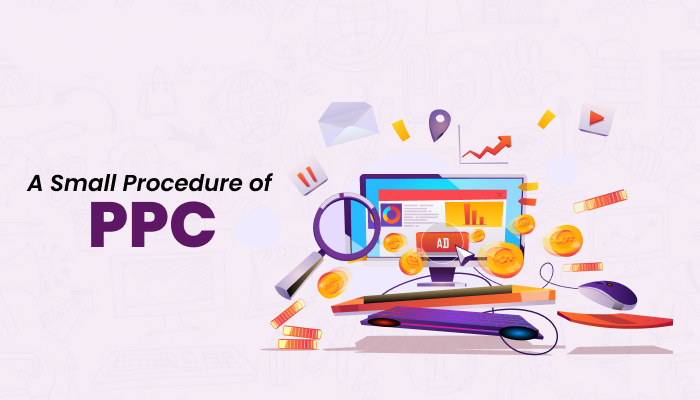
Pay-per-click (PPC) advertising is a digital advertising technique in which a company pays an ad publisher for each user who clicks on their adverts. Although the term “pay per click” is sometimes used only to represent search engine advertising platforms such as Google AdWords, the business model is employed by a wide range of marketers.
The most apparent application of PPC is on search engines such as Google and Bing. You may buy several sorts of advertisements here, such as text ads or Shopping ads, to show in various portions of the search engine.
Some key things to consider :
- Define your PPC objectives: Determine your business goals and what you hope to achieve with PPC advertising. Increasing website traffic, generating prospects, or driving conversions are all examples of this.
- Select the best PPC platform: Select the PPC platform that is most appropriate to your company and target demographic. Google Ads, Bing Ads, and social media advertising platforms such as Facebook Ads and LinkedIn Ads are also popular.
- Conduct keyword research: To uncover relevant and high-performing keywords that are aligned with your business objectives, select keywords with high search traffic and low competition, and use keyword research tools such as Google Keyword Planner or SEMrush.
- Make tailored advertisements: Make customized ads that correspond to your business aims and keywords. This might entail writing ad content, picking pictures or videos, and determining the best ad structure.
- Monitor and optimize your campaigns: Regularly monitor the success of your PPC campaigns and make changes to enhance your results. Track KPIs like as click-through rates, conversion rates, and return on investment (ROI) using analytics tools. Remember to assess and alter your PPC strategy on a frequent basis to stay current and competitive in your sector.
12. Implement Voice Search
As more people use voice-activated assistants like Siri, Alexa, and Google Assistant to search for information, products, and services, voice search is becoming increasingly popular.
Voice search is a function that allows users to search for information by speaking on a device. This becomes handy for the customers to search and it can be the most significant thing that should be included in your digital marketing strategy.
- When utilizing voice search, people utilize different terminology and wording than when typing into a search engine. As a result, it is critical to optimize your material for conversational language that corresponds to how people communicate.
- Optimize your content for natural language inquiries that will be utilized in voice search. This includes employing longer-tail keywords as well as common questions or phrases that individuals may use in their search inquiries.
- Local searches, such as discovering nearby shops or restaurants, are frequently conducted via voice search. As a result, it is critical to concentrate on local SEO methods such as claiming your Google My Business page and optimizing your website for local keywords.
- As the answer to a user’s inquiry, voice search devices frequently read out featured snippets. As a result, optimizing your content for featured snippets by offering clear, succinct answers to frequently asked topics is critical.
13. Harness the Power of Video Marketing

The use of video material to promote or enlighten consumers about your brand and products is referred to as video marketing. Brands can employ video on their own website, social media marketing, programmatic advertising, and other digital channels and formats.
Video marketing is a strong tool that may assist organizations in engaging with their target audience, increasing brand recognition, and driving conversions.
There are some essential measures to leverage the potential of video marketing in the context of digital marketing:
- Define your video marketing objectives: Determine your business goals and what you hope to achieve with video marketing. This might involve raising brand recognition, generating leads, or enhancing conversions.
- Identify your target audience: Develop video content that is customized to their interests, tastes, and requirements. This can assist you in increasing engagement and forging better bonds with your audience.
- Create visually engaging, informative, and entertaining video content: Create visually engaging, informative, and entertaining video content. To fascinate your audience, use narrative approaches.
- Optimize your videos for SEO: Include important keywords in your video titles, descriptions, and tags to optimize your videos for search engines. This might boost your search engine exposure and attract more traffic to your website.
- Analyse and optimize your video marketing strategy: Review the effectiveness of your video marketing efforts regularly and make changes to better your outcomes. Track indicators such as engagement rates, click-through rates, and conversion rates using analytics tools.
14. Collaborate with Influencers and Partnerships
Influencer marketing, also known as brand alliances, entails working with influencers to increase your business’s social media exposure.
To flourish and develop, both companies and influencers require communication, cooperation, and nurturing. Brand collaboration not only enhances your images but also lets people be aware of your brand. That could also be said as brand awareness or building your image strategy.
Collaborating with influencers and building relationships may be a powerful method to reach out to new audiences, raise brand recognition, and drive conversions.
Some important actions to consider when working with influencers and creating partnerships in digital marketing
- Determine relevant influencers and partners: Determine influencers and possible partners with relevant audiences and share your brand values. Look for people or businesses with a strong online presence and a high degree of engagement with their audience.
- Create a mutually beneficial alliance: Create a collaboration that benefits both sides. This might include working together to create content, giving discounts or promotions to each other’s audiences, or sponsoring events or campaigns.
- Results should be measured and tracked: Utilise analytics tools and metrics like engagement rates, click-through rates, and conversion rates. This might assist you in determining the success of your partnership and making any improvements.
- Maintain a positive connection with your influencers and partners: Communicating often, giving support and feedback, and expressing gratitude for their efforts. This can assist you in developing long-term relationships that can lead to future partnerships.
15. Affiliate Marketing
Affiliate marketing is a cool way for your business to make more sales without doing all the work. It’s like having a team of people who promote your products or services, and in return, you give them a small part of the sale they helped make.
Here’s how to get started with affiliate marketing:
- Find the Right Partners: Look for people or other businesses that fit well with what you sell. They should have a good number of followers or customers who trust what they say.
- Set Up Your Affiliate Program: Decide how much you’ll pay your partners for each sale. Make sure it’s a good deal for both of you. Use affiliate marketing software to keep track of sales and payments.
- Provide Resources to Your Affiliates: Give your affiliates all they need to sell your product well. This could be pictures, info about your product, or even training.
- Promote Your Affiliate Program: Let people know about your program. Use your website, social media, or even email newsletters to get the word out.
- Keep an Eye on Performance: Use tools to see how well your affiliates are doing. This will help you know what’s working and what’s not, so you can make changes if needed.
- Build Relationships with Your Affiliates: Stay in touch with your affiliates. Listen to their feedback and support them. Happy affiliates can bring more sales.
Adding affiliate marketing to your digital marketing plan can help you reach more customers and grow your business with less effort. Just make sure to manage it well and keep a good relationship with your partners.
See also: Affiliate Marketing Boosts Your Business to Become a Brand
Monitor, Analyze, and Adjust Your Digital Marketing Strategy
In today’s digital market that keeps changing all the time, monitoring, analyzing, and adapting your digital marketing approach is vital to success.
Set specific and quantifiable goals as well as key performance indicators (KPIs) for your digital marketing efforts. This will allow you to keep track of your progress and make data-driven decisions.
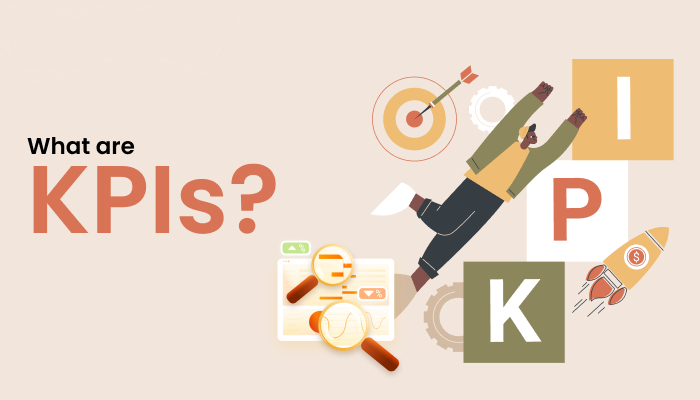
Track metrics like traffic, engagement, and conversion rates using analytics solutions such as Google Analytics, social media analytics, and email marketing analytics. This will assist you in determining where your plan is succeeding and where it needs to be improved.
Analyze your data to discover trends, patterns, and insights. Use this data to fine-tune your plan and increase your outcomes. Keep up with the latest digital marketing trends and best practices. This will assist you in remaining competitive and adapting to market developments.
Make modifications depending on the data and insights you acquire to continuously enhance your plan. This will assist you in remaining relevant, improving your outcomes, and achieving your objectives.
See also: A Comprehensive Guide to SXO
Empower Your Small Business with Us
The only service Make Vision Clear could provide and could assist you in building it.
To grow and establish your business in the eyes of your audience All you need to know is :
- Enhance your online exposure: Search engine optimization (SEO), pay-per-click advertising (PPC), and social media marketing may all assist small companies in enhancing their online presence. This can help them attract more traffic and produce more leads.
- Create brand awareness: Through content marketing, social media marketing, and influencer collaborations, digital marketing services may assist small businesses in creating brand recognition. This may assist the brand in positioning itself as a trusted expert in their sector and improve consumer loyalty.
- Drive conversions: Through focused email marketing campaigns, retargeting advertisements, and conversion rate optimization (CRO) tactics, digital marketing services may assist small businesses in driving conversions. This can assist in converting website visitors into paying consumers.
- Improve customer engagement: Through social media management, online reputation management, and customer review management, digital marketing services may assist small companies in improving client engagement. This can improve client happiness and brand loyalty.
Small companies can compete in the digital marketplace, reach their target audience, and drive growth by providing them with digital marketing services. Digital marketing services may help small companies reach their goals and prosper in today’s digital environment by enhancing online exposure, growing brand recognition, driving conversions, improving customer interaction, or offering data-driven insights.
What is a digital marketing service?
A digital marketing service is a collection of services aimed to assist businesses in promoting their products or services online. Customers and prospects are reached through digital channels such as search engines, social media, email, and websites.
Why is digital marketing important for small businesses?
In today’s scenario digital marketing is important for several reasons as :
Cost-effective: Digital marketing allows small firms to reach their target audience at a low cost. Digital marketing approaches such as social media or email marketing can be less expensive and more targeted than traditional advertising methods such as television or radio commercials.
Increased visibility: Small companies may use digital marketing to boost their online presence and reach a larger audience. Businesses may boost their positions in search engine results pages by using SEO and PPC advertising, making it simpler for potential consumers to find them.
Increases brand awareness and credibility: Digital marketing enables small firms to increase brand recognition and credibility. Businesses may position themselves as industry experts and acquire the trust of potential consumers through content marketing, social media, and influencer collaborations.
Digital marketing gives small companies the tools and tactics they need to reach their target audience, create their brand, and flourish. Small firms may compete with larger rivals and position themselves as industry leaders by embracing digital marketing.
What is SEO in digital marketing?
SEO (Search Engine Optimisation) is a digital marketing method that focuses on increasing a website’s or webpage’s exposure and rating in organic (non-paid) search engine results pages (SERPs). The fundamental purpose of SEO is to enhance the amount and quality of search engine traffic to a website.
How to start digital marketing?
Starting out in digital marketing might be daunting at first, but here are some pointers to get you started:
Define your objectives: It is critical to set your goals before embarking on any digital marketing strategy. What are your goals for digital marketing? Do you want to improve website traffic, create prospects, or enhance sales? Defining your objectives can assist you in developing a more successful and targeted digital marketing plan.
Determine your target audience: After you’ve set your objectives, it’s time to narrow down your target audience. Who are your ideal clients? What are their demographics, interests, and problems? Understanding your target audience can assist you in developing content and advertising that will appeal to them.
Create a website: The basis of your digital marketing approach is your website. It should be user-friendly, quick, and search engine optimised. Include clear calls to action and contact information.
Create content: In digital marketing, content is king. Create high-quality content for your target audience that is useful, interesting, and relevant. This can include blog articles, videos, infographics, social media postings, and other types of content.
Select your digital marketing channels: There are several digital marketing channels to select from, such as social media, email marketing, SEO, PPC advertising, and others. Choose the channels that best fit your objectives and target audience.
Finally, it’s critical to track and analyse the results of your digital marketing initiatives. Track website traffic with technologies such as Google Analytics.
Starting a digital marketing service might be difficult, but it is a necessary step for organisations seeking to prosper in today’s digital world.
What is a digital marketing strategy for small businesses?
A digital marketing plan for small businesses should be adjusted to the company’s specific goals and resources. This includes :
Website optimization, Content Marketing, Social media marketing, Email marketing & Local SEO. Even many more strategies are involved.
What is a 5 step digital marketing strategy?
A 5-step digital marketing plan might vary depending on the aims and resources of the firm, but here is a common framework:
Define your target market: Determine your ideal consumer, their wants, and how you can provide value to their lives. To drive your marketing activities, do market research, analyse consumer data, and establish buyer personas.
Set precise objectives: Determine defined, quantifiable objectives for your digital marketing initiatives. This might involve increasing website traffic, generating leads, increasing social media engagement, or increasing sales.
Create a strategy and tactics: Create a complete strategy for accomplishing your goals. This should contain the particular methods and channels you will employ, such as SEO, content marketing, social media marketing, email marketing, and paid advertising. Determine the money and resources required for each technique.
Refine and optimise: Based on the data and insights you receive, continuously assess and refine your digital marketing plan. Identify areas for improvement and put new strategies to the test to increase performance over time.
Businesses may build a clear digital marketing plan that is connected with their goals and focused on reaching and engaging their target audience by following these steps.
What are the 4 types of marketing strategies?
Four types of strategies :
Product differentiation strategy : This approach focuses on developing a distinct product or service that distinguishes itself from market rivals. This might include adding new features or advantages, enhancing quality, or modifying a product’s design or packaging.
Cost effective : This approach focuses on supplying a product or service at a cheaper cost than rivals while retaining quality. This might include lowering manufacturing costs, increasing efficiency, or utilising economies of scale to bring down prices.
Market segmentation : This strategy is separating the market into smaller groups based on certain features or demands, and then producing and selling products or services that fit the specific needs of each segment. This may entail customising messaging, pricing, and promotional activities.
Niche marketing : This strategy is focusing on a single, small market segment and providing products or services to fit the group’s unique demands. This might entail focusing on a certain demographic, geographic location, or interest group.
Depending on the aims and resources of the firm, these four marketing tactics can be employed singly or in combination. To identify the most successful company strategy, it is critical to properly analyse the market and the demands of the target audience
